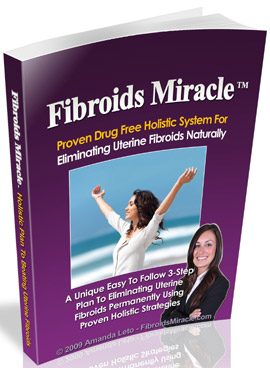4 Uterine Fibroids Treatment Options, Risks & Symptoms: Complete Guide 2024
By Vanessa Richards
January 10, 2024 • Fact checked by Dumb Little Man
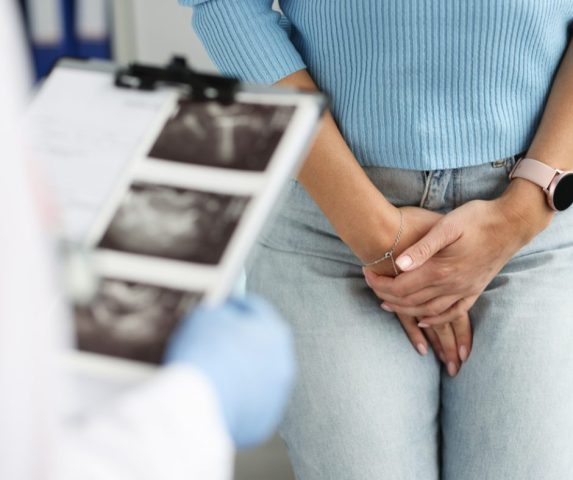
The uterus is a very sensitive organ and requires a great deal of protection because it is where babies grow. The wall of the uterus is made up of muscular tissues.
Sometimes, especially during pregnancy, the wall of the uterus grows connective tissues known as leiomyomas or uterine fibroids. The fibroids are usually very small and, therefore, not detectable.
Although these fibroids are benign, they can still cause a great deal of discomfort if they become bulkier in size. When the fibroids become bulkier in size, they put pressure on the bladder. This can cause urinary and rectal discomfort and heavy menstrual bleeding.
The good news is that these growths are benign and mostly do not lead to cancer. However, you have to be very careful. They can stay asymptomatic for a long time while slowly developing into symptomatic uterine fibroids.
Let's look into the different uterine fibroids treatments, causes, and warning signs.
Uterine Fibroids Treatment: What are Uterine Fibroids?
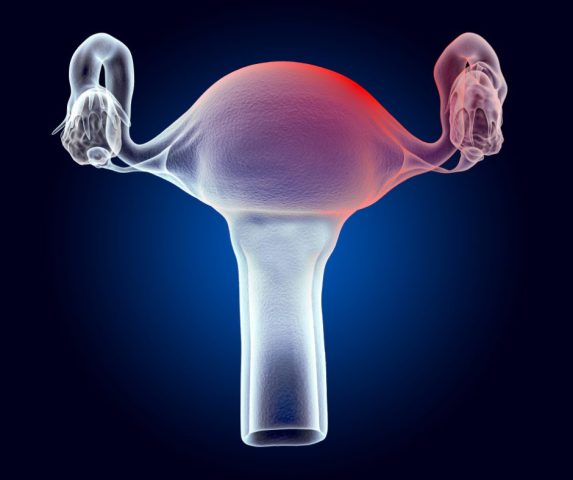
Uterine fibroids are noncancerous muscular tissues rich in blood vessels that grow on the wall of the women. For the most part, the fibroids are very small. These are almost undetectable in size and do not lead to any symptoms.
When these tissues or tumors grow in size, they can lead to pelvic pain. Also, it can cause menstrual discomfort and even infertility.
These tumors can either grow singularly or in clusters. In severe cases, they can become as large as a grapefruit and even watermelon, extending all the way to the rib cage. Women of age 40 to 50 are more likely to develop these tumorous tissues.
Fibroids usually shrink with time on their own. This is directly linked with hormones. Hormonal imbalances are among the major reasons behind fibroids.
Research indicates that women with high levels of hormones are usually more likely to develop bigger fibroids. This is especially the case during pregnancy. That’s because during pregnancy, the female body releases higher levels of a certain hormone in order to support the growth of the fetus.
That’s why it is very important to check for fibroids before and during pregnancy. Similarly, during menopause, hormone levels in the female body drop. This then leads to the shrinkage of the fibroids.
Symptoms of Uterine Fibroids
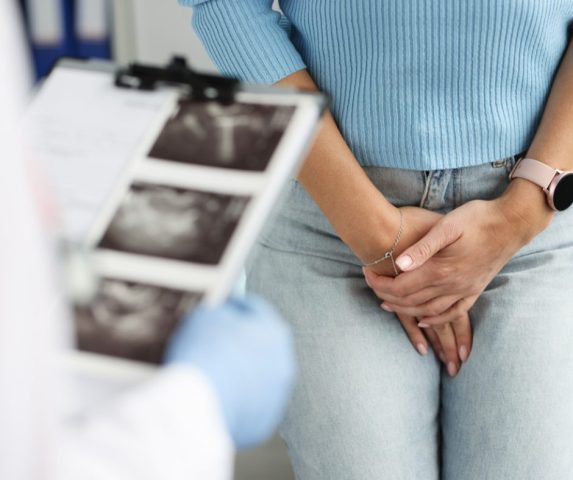
| Symptoms |
|---|
| Heavy bleeding that includes clots |
| Increased menstrual cramping |
| Longer menstrual cycles |
| Abnormal uterine bleeding |
| Enlarged abdomen |
| Abnormal size of the uterus |
| Pelvic pain |
| Pain in the lower back |
| Frequent urination |
| Rectal discomfort |
| Pain during sexual intercourse due to vaginal dryness |
| Pelvic pressure |
| Abdominal swelling or enlargement |
| Complications during pregnancy |
| Complications during labor |
| Infertility and other reproductive problems |
Causes of Uterine Fibroids
So far, scientists haven’t completely figured out why women develop uterine fibroid. It is unclear why they mostly occur during the reproductive age of women and not in young women.
The association between fibroids and menstruation is also unclear. As far as our current scientific understanding of uterine fibroid goes, they may be caused by either of the following factors.
Genetic Factors: Some studies suggest that uterine fibroids may be caused by genetic abnormalities and hereditary factors.
Estrogen Imbalances: Studies show that women have higher levels of estrogen. Also, women who are exposed to high levels of estrogen for a prolonged time are more likely to develop uterine fibroids.
The same is true about progesterone. Scientists believe that estrogen and progesterone imbalances may be the cause of uterine fibroids. This is because these hormones are directly responsible for the regeneration of the uterine lining during the menstrual cycle.
Studies show that pregnant women are more likely to develop uterine fibroids. This is probably because of the increased production of progesterone and estrogen during pregnancy.
>> Related Article: Managing High Estrogen Symptoms: Complete Guide 2024
Types of Fibroids
Knowing the type of fibroids you have is highly important, not just from a diagnostic perspective but also from a treatment perspective. The following are some of the main types of uterine fibroids.
Submucosal Fibroids
Uterine fibroids that grow inside the uterine cavity are known as submucosal fibroids. These fibroids can affect the baby; hence they are located inside the uterus where the baby grows. They usually extend inwards into the middle of the empty uterine space.
Intramural Fibroids
Uterine fibroids that are embedded into the uterine wall are known as intramural fibroids. They do not grow inside the uterine cavity but inside the wall of the womb.
Subserosal Fibroids
Uterine fibroids that are attached to and grow on the outside of the uterine wall are known as subserosal fibroids.
Pedunculated Fibroids
Just like subserosal fibroids, pedunculated fibroids are also attached to and grow on the external side of the uterine wall. However, these fibroids are connected to the womb with the help of a thin stem, while subserosal fibroids aren’t. These fibroids are often shaped like mushrooms.
Broad Ligament Fibroids
Broad ligament fibroid grows either from the broad ligament of the uterus or the smooth muscles of the uterus. The broad ligament connects the uterus to the pelvic floor and walls. The broad ligament covers not only the uterus but also the ovaries and the fallopian tubes. Broad ligament fibroids stay asymptomatic for the most part.
Diagnosing Uterine Fibroids
Since uterine fibroids remain asymptomatic for the most part, they are usually not felt by the women who have them. They usually come to light during pelvic exams that gynecologists recommend Guided-focused are the main ways of diagnosing uterine fibroids.
Ultrasound
Guided-focused ultrasound involves taking a close look at the uterus using high-frequency sound waves. Focused Ultrasound is used in cases where the gynecologist is interested in looking at the internal structure of the fibroids.
In the case of uterine fibroid, doctors usually use a transvaginal ultrasound. In this type of ultrasound, a stick is inserted into the vagina in order to capture the inside of the uterus. Ultrasound is also used to locate the position of the fibroids on the uterine wall.
Some doctors prefer using magnetic resonance imaging instead of ultrasound.
Hysterosalpingography (HSG)
This procedure involves an X-ray, but in order to enhance the contrast of the X-ray image, a contrast material is first injected. This procedure is commonly used for diagnosing uterine fibroids in people who are undergoing infertility evaluation.
Laparoscopy
This procedure involves the insertion of a catheter with a camera attached to its end through an incision in the lower abdomen. This procedure is used in cases where taking a very close look at the uterus is intended.
Risk Factors
Uterine fibroids typically occur in women past their 40s. Here are some of the factors that may leave women vulnerable to developing uterine fibroids:
| Risk Factors |
|---|
| Obesity (about 20% more weight than normal) |
| Family history of fibroids |
| High blood pressure |
| Early onset of menstruation |
| Late menopause |
| Diet high in red meat |
Preventing Uterine Fibroids
Our knowledge of the causes and risk factors of these fibroids can help us prevent them from further progressing. Taking supplements that balance our hormones can be a life-saving decision.
Best-Selling All-Natural Hormone Balancing Supplement: Hormonal Harmony HB-5
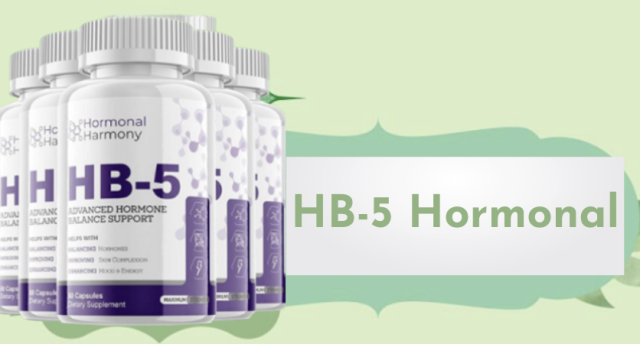
Hormonal Harmony, created by Dr. Eric J. Wood, addresses the issue of hormonal blocks through this natural remedy. This supplement aids thousands of people who suffer from poor health and mental problems.
The dietary supplement resolves the issue of a hormonal block by utilizing components that are derived from purely natural sources.
Shop HB-5 Hormonal Supplement at the Official Website
Full Article: Hormonal Harmony Reviews: Does it Really Work?
Treating Uterine Fibroids
There are many factors that determine which type of treatment is best for a person. Treatment choice for uterine fibroids depends upon:
- The size of the fibroids
- The location of the fibroids
- How many fibroids are there
- Fibroid volume
- The symptoms of the fibroids
- The intensity and frequency of the symptoms of the fibroids
- Pregnancy status and whether or not you desire to become pregnant in the future
Surgical Procedures
There are a couple of things you should know about the surgical removal of fibroids. Most surgical procedures used for treating fibroids are invasive.
Apart from that, some procedures involve the surgical removal of the uterus and ovaries. So, before deciding to go for surgery, you should first decide whether or not you would like to become pregnant in the future or not.
Total Abdominal Hysterectomy (TAH)
This is a surgical procedure used to remove fibroids. It is used to remove fibroids that are larger in size. This is an extremely invasive procedure because it involves 5-7 inches of incision in the lower abdomen. It is preferred when the fibroids have affected the ovaries, and the ovaries also need removal.
Laparoscopy
It is a fibroid surgery that involves the use of a scope that is inserted through small incisions in the abdomen. This procedure can also be done robotically.
Vaginal Hysterectomy
This is a surgical procedure used for removing the uterus. It is used for treating fibroids in cases where the patient is suffering from severe symptoms.
It involves detaching the uterus from the upper vagina, fallopian tubes, uterus, and the supporting connective tissues and blood vessels. This surgical procedure is recommended if your fibroid tissue results in abnormal menstrual bleeding.
It is important to remember that you will not be able to go into menopause after this surgery.
Uterine Artery Embolization (Uterine Fibroid Embolization)
This is a minimally invasive procedure that involves blocking blood flow to the fibroids. Uterine artery embolization is accomplished by putting small particles in the radial or uterine artery with the help of a small catheter.
The unavailability of blood shrink fibroids, and the symptoms slowly go away. It works great for most fibroids.
Over-the-Counter Medications
Some of the commonly used over-the-counter medications for treating uterine fibroids include ibuprofen and acetaminophen.
Elagolix
It is an oral medication used for treating fibroids that result in heavy bleeding. It is often prescribed only to women who haven’t been through menopause. Typically, doctors suggest a 2-year course of elagolix.
Tranexamic acid
This is also used for treating fibroids that result in heavy cyclic menstrual bleeding.
Some symptoms of fibroids, such as severe menstrual bleeding and cramps, can be successfully treated with birth control pills. You can use intravaginal and oral contraceptives as well as other intrauterine devices and injections.
Apart from these medications, iron supplements are recommended in cases where the fibroids lead to Gonadotropin-Releasing heavy menstruation Gonadotropin-Releasingal Medications
Gonadotropin-Releasing Hormone Agonists
Gonadotropin-Releasing Hormone–GnRH agonists are injections that are used to shrink fibroids. Typically, these medications are used prior to the surgical removal of the fibroids. It is important to understand that GnRH agonists only offer temporary relief.
The fibroids can grow back even after they shrink as a result of using GnRH agonists. The GnRH agonists suppress the growth of the fibroids by lowering the level of estrogen in the female’s body.
These types of medications should be used very carefully and not taken for more than 6 months. That’s because they can induce osteoporosis.
In order to reduce the side effects, doctors often prescribe estrogen or progestin pills along with the GnRH agonists.
Selective Estrogen Receptor Modulators (SERMs)
Selective Estrogen Receptor Modulators (SERMs) are relatively new medicines for treating fibroids without menopause symptoms as side effects.
Natural Remedies
As we already saw, most of the treatments of uterine fibroids either involve invasive surgeries or medicines that can imbalance the hormonal system and lead to severe side effects. That’s why we have researched some home remedies that can help you treat uterine fibroids in a totally non-invasive way.
Here are some of the best scientifically proven natural remedies for treating and preventing fibroids:
Quit Alcohol
Research shows that women who drink more alcohol are more likely to develop fibroids. This is because alcohol has a direct impact on hormones, and hormonal imbalance is among the major causes of fibroids.
Alcohol also causes and exacerbates inflammation, which is why it can worsen your fibroids.
Lower Your Blood Pressure
Research indicates that there is a positive link between high blood pressure and uterine fibroids. That’s why one way to beat fibroids is to balance your blood pressure.
Here are some tips you can follow to keep your blood pressure low:
- Avoid excessive salt
- Limit the consumption of processed and packaged foods
- Exercise
- Quit alcohol
- Quit smoking
- Lose weight
- Eat vegetables that are rich in potassium
Vitamin D
Research indicates that eating foods that are rich in vitamin D significantly reduces the risk of fibroids by about 32 percent. So, make sure you expose your body enough to sunlight, especially if you live in a cold area.
Also, eat egg yolks, cheese, fortified cereals, fatty fish, cod liver, and other foods that are rich in vitamin D. Having a healthy diet is the best fibroid treatment that doesn't cost anything!
Digital Program
Treats Pain and Discomfort Within 12hrs: Fiboid Miracle
There are hundreds of supplements and medicines available on the market that claim to treat fibroids successfully. However, the truth about those supplements and medicines is that they do not treat fibroids completely.
Sometimes, they cause side effects that make the problem worse and lead to more problems. That’s why we did extensive research to find out the safest and most effective programs for treating fibroids.
After a lot of research, we finally found the miraculous program Fibroid Miracle. It has “miracle” right there in the name, and that’s not for nothing. It is more than just another e-book.
This program is the most holistic program for treating fibroids, and we are super excited to tell you all about it!
What is Fibroid Miracle?
Fibroid Miracle is a 3-step system backed by extensive medical and nutritional research. The whole point of this program is to treat all types of fibroids without using any conventional medicines or supplements.
This program is backed by over 65,000 hours of rigorous scientific research. If you follow the instructions in this program, you will be able to treat your fibroid regardless of its type or severity successfully.
Benefits of the Fibroid Miracle Program
- Fibroid Miracle will help you get rid of any type of fibroid within one month.
- Treats fibroids of all sizes regardless of fibroid volume.
- This program contains strategies that, if you follow, will help you prevent the recurrence of fibroids.
- Fibroid Miracle will boost your fertility.
- Help you get rid of and prevent uncomfortable and irregular periods.
- Fibroid Miracle will teach you how to stop bladder pressure.
- It contains excellent treatments for menorrhagia and dysmenorrhea.
- This program will teach you how to avoid painful sexual intercourse, i.e., dyspareunia.
- It will improve your overall life.
- This amazing program can treat large uterine fibroids successfully.
- It works even if you have crossed menopause.
- The strategies in this program are helpful even if you have endometriosis.
- Save you from conventional invasive treatments and surgeries such as radiofrequency ablation.
- This program will teach you about the nutritional strategies that will speed up your recovery.
- Fibroid Miracle will teach you how to lose weight in a healthy and gradual manner.
- Helps you stay relaxed and enjoy a sound sleep.
- It will help you stay energetic.
- Fibroid Miracle will help you enhance your mental clarity.
Components of the E-book
Here is an outline of what this amazing program contains:
- A 3-Step holistic program for dissolving uterine fibroids and alleviating related symptoms
- A combination of magical herbs that can speed up your recovery
- The Three-Part Secret
- The complete fibroids cookbook
- Anti-fibroid supplements
- Breathing strategies
- 7 detailed nutritional guides
What Will You Learn in This Program?
- This program will teach you how to treat pain and discomfort related to fibroid within almost 12 hours.
- You will learn about the symptoms and causes of all types of fibroids.
- This program will teach you about the most effective treatments for fibroids.
- Fibroid Miracle will teach you exactly what to avoid.
- Teach you how to devise a diet that is nutritionally the best for your unique condition.
- Shocking side effects of conventional treatments and why you should avoid them.
- Over-the-counter supplements will help you treat inflammation, bleeding, pain, cramping, and all other symptoms of fibroid.
- This program will teach you about the protocols you should follow during intercourse in order to avoid pain and irritation during intercourse.
- Teach you about the link between infertility and fibroids and the steps you can follow to avoid both.
- Fibroid Miracle will teach you how to eliminate the toxins from your system that nourish the fibroid you have.
- Simple supplements that can help you prevent free radicals from affecting your uterus.
- How to make your body produce more prostaglandin with just one supplement!
- Show you simple TCM protocols.
Shop Fibroids Miracle System at the Official Website.
Full Article: Amanda Leto Fibroids Miracle Reviews 2024: Does it Really Work?
Conclusion
As we know, most treatments for fibroids are surgical or hormonal. Some of the conventional treatments involve complete removal of the uterus, rendering women completely incapable of having babies.
That's why people are in search of treatments that don't affect their reproductive health. Luckily, we've come across Fibroid Miracle, which is the best non-invasive and completely natural program for treating uterine fibroids.
Why is Fibroid Miracle the Best?
- Fibroid Miracle offers a permanent cure for fibroids of all types.
- It addresses the root causes of all types of fibroids.
- This program works in a holistic way. Also, it addresses all the factors responsible for uterine fibroids instead of just fixing the symptoms that appear on the surface.
- It is a totally safe and natural program that doesn't involve even minimally invasive procedures.
- You will experience the positive results of this program within 8 weeks.
- Clinically proven effective.
- This program is among the bestselling guides for treating fibroids.
- Fibroid Miracle is written in a systematic step-by-step fashion.
- With this program, you will also get free private email counseling for three months with the creator of the program.
- Totally customizable according to the patient’s unique conditions.
- Uses a multi-dimensional approach.
Fibroids Miracle is worth your time and money because:
- It has up-to-date pictures, diagrams, and illustrations.
- You will also get to benefit from $365.87 worth of additional bonuses.
- Backed by over 65,000 hours of rigorous research.
- Has 250 pages but is easily readable and understandable.
- It is trusted by over 1000 women worldwide.
- Instantly downloadable.
Click Here to Get Fibroids Miracle System at Discounted Price.
Uterine Fibroid FAQs
Can fibroids lead to infertility in women?
Usually, fibroids do not cause infertility in most women. However, they can cause infertility in severe cases.
What is the difference between fibroids and PCOS?
Uterine fibroids occur in the uterus, while PCOS is a disease of the ovaries.
Can fibroids lead to anemia?
If there is heavy menstrual bleeding involved, then fibroids can lead to anemia.
Vanessa Richards
Vanessa is a mom of 3 lovely children and a software geek. Outside of her career as a health and wellness instructor. She enjoys writing and researching on topics such as finance, software, health and culinary.


